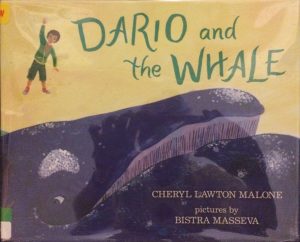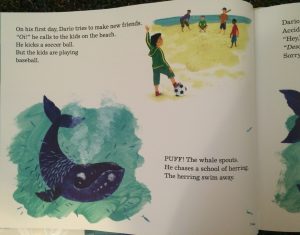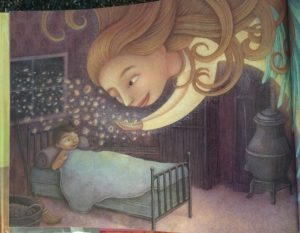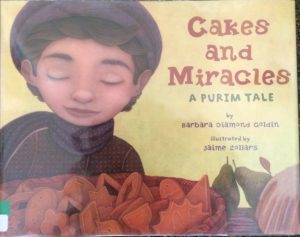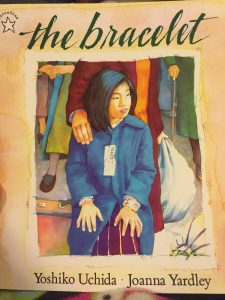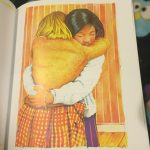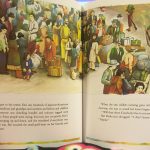
Author: Mary Williams
Illustrator: R. Gregory Christie
Publishing Information: Lee & Low Books Inc., 2005
Number of Pages: 36
Genre: Historical Fiction, Picture book


Analysis:
Garang and his family live a happy life before the war comes. He goes on a journey first to Ethiopia and then to Kenya with other boys who are lost. Finally, they are rescued and provided a home in the United States.
The book shows a historical fact by demonstrating a tough journey Garang and his friend have. The text functions as both a window and a mirror for children to look back at history and reflect many kinds of harm done by wars. During the journey, friendship, brotherhood and tenacity are presented.
I found some of the illustrations problematic. I do agree that the rescuer Tom and the teacher in the school are positive characters. However, the illustrator keeps depicting white people much taller and bigger that the Sudan boys. Besides, white characters are put in a higher space of the images. That may give children an impression that white people are supreme and stronger than black people.
Perceptually, the text in this book is relatively dense. The lost boys are moving to the right which demonstrates that they are moving forward but not secure. The book uses dark color to depict a depressing atmosphere. When people thought there were soldiers, the horizon on the image suddenly disappeared which signifies that people are nervous. Structurally, text and images overlap. The images are not framed which helps reader to actually participate in the story. Ideologically, the author and the illustrator hit on the following four aspects. Firstly, the book stresses on family bond. Garang’s father used to encourage him to be brave and not afraid of cattle. Garang always remembers his father’s words, “Garang, be brave. Your heart and mind are strong. There is nothing you cannot do” (P. 2). Secondly, the book promotes individuality. We can see distinguished characteristics of leadership on Garang through the journey. He makes decision for the group, allocates the work and encourages them to go to school. Thirdly, while talking about individuality, the book also helps children realize the importance of teamwork. The value of a group is presented when the boys help each other to go across the river. They never leave anyone behind. Fourthly, the book teaches children to cherish the peace we have today.

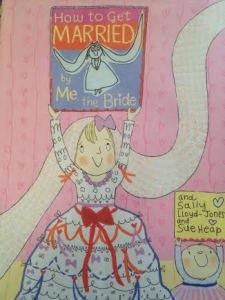

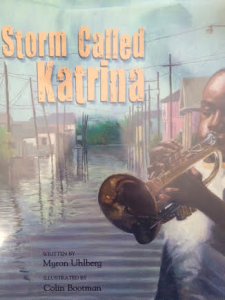
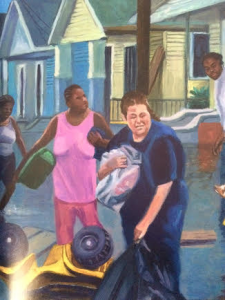
 Pinduli is the story of a beautiful hyena that wanders away from her mother into the East African wild. While Pinduli is wandering she runs into dogs, a lion and a zebra who all judged Pinduli’s looks. Pinduli becomes very self conscience and starts to change her looks to fit in, she gets to the point where she covers herself in dust making her look like a ghost. All the animals that once teased her were now afraid of her and begged her to forgive them for being mean since the believed she was a ghost. Pinduli told them they must find out why they were teasing others and give the one you teased food to be forgiven. Pinduli’s mother found her and reminded her of her inner and outer beauty
Pinduli is the story of a beautiful hyena that wanders away from her mother into the East African wild. While Pinduli is wandering she runs into dogs, a lion and a zebra who all judged Pinduli’s looks. Pinduli becomes very self conscience and starts to change her looks to fit in, she gets to the point where she covers herself in dust making her look like a ghost. All the animals that once teased her were now afraid of her and begged her to forgive them for being mean since the believed she was a ghost. Pinduli told them they must find out why they were teasing others and give the one you teased food to be forgiven. Pinduli’s mother found her and reminded her of her inner and outer beauty
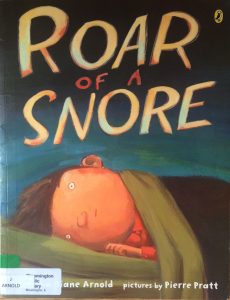
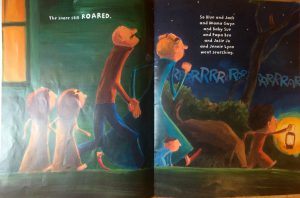
 Take Me Out to The Yakyu is a story about a boy who loves baseball in American and Japan. Through out the story he explains his favorite part about baseball in both countries. I believe that this text would be considered a window because not a lot of people have the opportunity to get the same experiences as the boy in the story so they are unable to connect on a personal level. This text can also be considered a mirror since baseball is a big part of American culture. Although Americans are unable to connect with the Japanese baseball games, they both are the same sport. So if an American or Japanese reader picked up with book they would have the opportunity to connect with it. I really love how this text displays culture. It showed both American and Japanese culture equally and I actually learned some new things about Japanese culture from this book. The images are the main thing that really shows the different culture. On all the left pages there are images of what the boy does at American baseball games and on all the right pages it is an image of what the boy does at Japanese baseball games. So for example on page 10 he is talking about the food he gets at the games. On the left side there is a picture of a hot dog and peanuts, on the right side there is a picture of soba noodles and edamame. The images are full of color and have a lot of detail, and the text mirrors the pictures perfectly which helps describe what is going on in the culture one might not know well. One of my favorite things about the text is that on each page they have American sayings like fastball then on the opposite page they have the Japanese version of that saying. I never expected to learn a couple words in a different language from a children’s book. The text really shows two different cultures and that it is okay to have two different things part of your life. I also think that this text does a good job at showing that activities may not be as different as we think in other cultures. In both countries they are playing the same sport with the same rules. The only difference is the culture that is surrounding the game. I really enjoyed this text and I think it would be a great book to use in the classroom to show that culture can make people different and that it is important to have a good understanding of culture and that its okay to be different.
Take Me Out to The Yakyu is a story about a boy who loves baseball in American and Japan. Through out the story he explains his favorite part about baseball in both countries. I believe that this text would be considered a window because not a lot of people have the opportunity to get the same experiences as the boy in the story so they are unable to connect on a personal level. This text can also be considered a mirror since baseball is a big part of American culture. Although Americans are unable to connect with the Japanese baseball games, they both are the same sport. So if an American or Japanese reader picked up with book they would have the opportunity to connect with it. I really love how this text displays culture. It showed both American and Japanese culture equally and I actually learned some new things about Japanese culture from this book. The images are the main thing that really shows the different culture. On all the left pages there are images of what the boy does at American baseball games and on all the right pages it is an image of what the boy does at Japanese baseball games. So for example on page 10 he is talking about the food he gets at the games. On the left side there is a picture of a hot dog and peanuts, on the right side there is a picture of soba noodles and edamame. The images are full of color and have a lot of detail, and the text mirrors the pictures perfectly which helps describe what is going on in the culture one might not know well. One of my favorite things about the text is that on each page they have American sayings like fastball then on the opposite page they have the Japanese version of that saying. I never expected to learn a couple words in a different language from a children’s book. The text really shows two different cultures and that it is okay to have two different things part of your life. I also think that this text does a good job at showing that activities may not be as different as we think in other cultures. In both countries they are playing the same sport with the same rules. The only difference is the culture that is surrounding the game. I really enjoyed this text and I think it would be a great book to use in the classroom to show that culture can make people different and that it is important to have a good understanding of culture and that its okay to be different.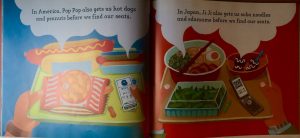
 Illustrator: Brooke Boynton Hughes
Illustrator: Brooke Boynton Hughes
